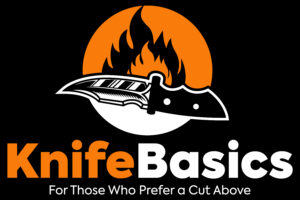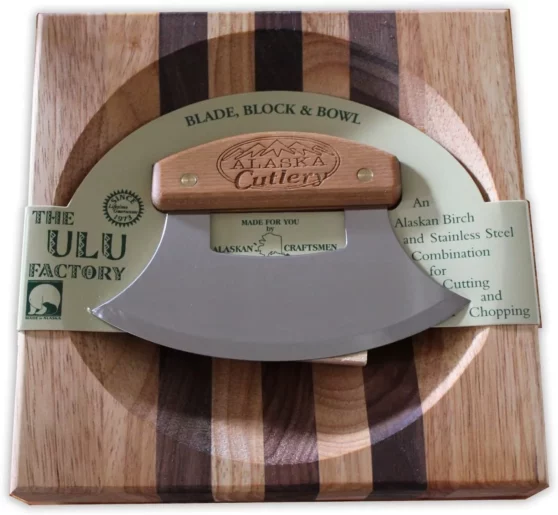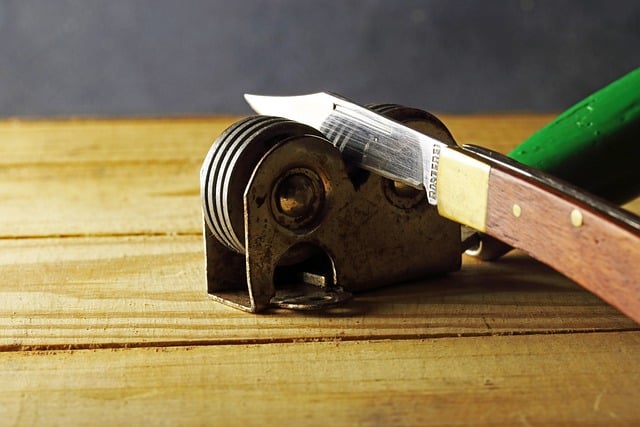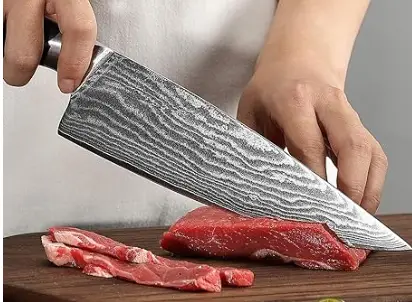Unleash the hidden charm and adaptability of the Ulu knife with our comprehensive guide catered to culinary enthusiasts like you. With its unique design and rich history, the Ulu knife has been an indispensable tool in kitchens for centuries. Crafted by skilled artisans, the Ulu knife boasts a distinctive curved blade that effortlessly glides through ingredients with precision.
Whether you’re slicing, dicing, mincing, or even scooping, this versatile tool will revolutionize your culinary experience. Our guide will walk you through the fascinating origins of the Ulu knife, shedding light on its significance in various cultures. From its native roots in Alaska to its presence in modern kitchens worldwide, you’ll discover the versatility and functionality that sets the Ulu knife apart.
We’ll delve into the different types of Ulu knives available, helping you choose the perfect one for your cooking needs. With recommendations on maintenance and care, you’ll learn how to keep your Ulu knife sharp and in optimal condition for years to come. Unlock the potential of this remarkable tool and elevate your culinary creations with the Ulu knife. Prepare to be amazed by its beauty and efficiency in the kitchen.
You may not have heard of the Ulu knife, probably because Japanese knives are more popular. But its reputation as a kitchen powerhouse remains valid. Over time, ulu has maintained its place as a cleaver with multipurpose qualities. So, what makes the knife so outstanding? Let us look at the Ulu knife’s history, Uses, features, and how it has evolved over the years.
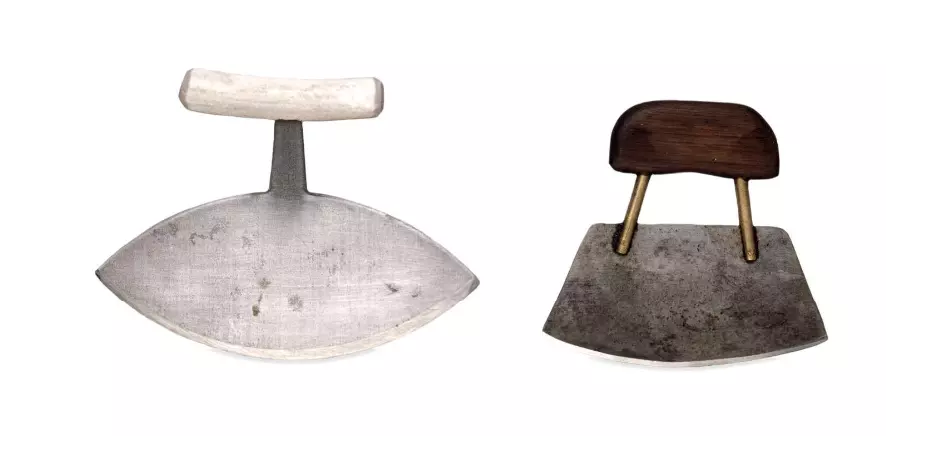
Ulu knife History and uses
The Ulu’s existence and relevance go back to 2500 BC. The native Ulu knife, known as Uluurag, means the woman’s knife. Ulu was popular among the Yupik, Inuit, and Aleut natives in Greenland, Canada, and Alaska.
The ulu knife is characterized by its distinctive crescent-shaped blade, which makes it ideal for working in tight spaces or around curved surfaces.
The Eskimo women and Inuit women used the Ulu knife for a variety of tasks to skin animals, chopping meat chunks, and cutting the children’s hair. Ulu also had widespread use as a defensive weapon.
The native Eskimos made the Ulu blade from materials such as quartzite, slate, or shale. They used ivory, wood, and sometimes bone to make the handles.
Apart from its domestic uses, the Ulu knife also held a high cultural value. The communities would award an ulu to the people who emerged victorious in contests.
The Present Ulu Knife
The influence and symbolism of the Ulu knife in the Inuit culture remain consistent. But ulu has also penetrated the market and modern kitchens worldwide.
To date, Ulu still maintains its multipurpose qualities. You can use it to perform most kitchen chores, whether vegetable or meat-related.
The Ulu is especially ideal for cutting food on the chopping board. Its curved blade holds on to the surface providing the rocking motion that you need while chopping.
One of the most outstanding qualities of the knife is its user-friendliness. For instance, it is pretty easy for someone with arthritis or short fingers to use the knife. And with a variety of blade sizes, you can choose which knife works best for you.
Features of the Ulu knife
Size
The Ulu knife comes in different sizes, depending on the intended purpose. The short two-inch Ulu knife is ideal for cutting small ingredients and vegetables.
The traditional 12-inch Ulu was popular for chopping meat and herbs. This knife has evolved into a multipurpose blade in the modern kitchen.
The design
The modern Ulu knives feature high carbon steel and stainless-steel blades. They also boast wooden, G10, Micarta, or plastic ergonomic handles.
By looking at the blade design, you can tell where an Ulu knife originated. The Canadian Ulu blade is attached to the handle in the center by a single stem.
An Ulu from the western Greenland origins has pointed blades. If it is from the eastern Greenland, you will identify it with the triangular blade.
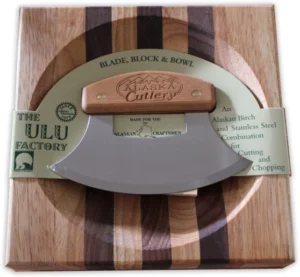
The Alaskan Styled blade, also known as the Inuit, is more popular. The blade has a centerpiece cut out so that both ends fit into the handle.
Shape
The Ulu blade is curved such that the force concentrates in the middle. This feature lessens the energy you need when cutting through rigid objects.
Coupled with the strong handle, the shape of the ulu knife also makes it perfect for one-hand users. Like its traditional counterpart, the modern Ulu knife is also versatile. Thus, it is friendly to even the less experienced handlers.
Edges
As seen, the Ulu knife boasts a curved blade that makes the cutting experience easier. Also, the Ulu knife maintains the sharp edges for a long time. Moreover, it is easy to sharpen the blade using a whetstone.
But some modern Ulu knives feature high carbon steel blades, which are prone to rust. Thus, it is good to note that you need to apply some vegetable oil to the blade to keep corrosion away. It would be best if you also were extra vigilant when cleaning the edges. The curved edges are quite sharp and can skim into your skin.
The Experts recommend the traditional whetstone is sharpening the knife. All you need to do is apply gentle pressure on the blade and rub it through the whetstone. If you notice some chippings along the edges, use sandpaper to remove them.
Ease of carrying
The Ulu knife comes with a leather shield that provides full coverage to the blade. You can hang the knife on your belt when performing your outdoor activities. Thus, ulu is the perfect fit for camping activities.
Related: Why Pancake Knife Sheaths Are Essential For Every Home Chef
Ulu Knife Vs Mezzaluna
From the first look, it is easy to confuse the ulu with the Mezzaluna. Most people refer to the Mezzaluna as the Italian version of the Ulu. But on closer look, the two blades are different. Let us have a look at these differences and how they translate to the knives’ functionalities.
- The Ulu knife has only one handle. The Mezzaluna has two handles and is ideal for two-hand use.
- The Ulu has one curved blade. The Mezzaluna has either one curve blade or a pair that are parallel to each other.
- The Mezzaluna is ideal for chopping herbs. The Ulu knife is suitable for various uses, and thus it is a multipurpose knife.
The pros and cons of the ulu knife
Pros
- The ulu has a beautiful design
- It is versatile and easy to handle for the less skilled user.
- You can use it to perform a variety of tasks
- It has an ergonomic handle
- Ulu is disability friendly
Cons
- Not suitable for piercing tasks
- Does not allow precision cuts
The Ulu Knife Shopping Guide
The Ulu comes in a variety of brands. Thus, like other knives, shopping for one may not always be a smooth experience. Below are some factors you need to consider when buying the ulu knife.
Handle and build materials
The modern ulu versions are made from wood or plastic. Whereas the wooden handle provides a more comfortable grip, plastic is easier to clean.
You can choose between stainless steel and high carbon steel for the blade. Stainless steel is rust-free but dulls quickly. The high carbon steel rusts if not well maintained but stays sharp for longer.
Size
The small blade ulu knife is ideal for cutting small items. Go for a longer blade if you intend to perform heavy-duty tasks with the knife.
Price
The Ulu knife is affordable, with an average price of 30 to 50 dollars. But these prices vary depending on the size and the blade material you want.
Conclusion
The Ulu knife is a multipurpose knife that can be used for a variety of tasks in the kitchen. It is especially useful for cutting food on the chopping board. The Ulu knife is referred to as a woman’s knife as it was mostly used by Yupik, Inuit, and Aleut women.
- East Meets Arctic – Japanese Forging x Ulu Heritage.Inspired by the enduring design of the Inuit ulu and refined through the precision of traditional Japanese forging, this rocker knife is a true blend of two worlds. The sweeping curved blade channels centuries of Arctic functionality, while expert craftsmanship delivers exceptional sharpness, edge retention, and balance. A seamless fusion of cultural heritage and cutting-edge performance.
- Hand-Forged High Carbon Steel: Every Blade Tells a Story.Forged by hand through over 70 meticulous steps—heat treatment, hammering, quenching, cold shaping—each blade is a unique expression of craftsmanship. Made from premium high carbon steel, the chopping knife offers outstanding sharpness, durability, and strength. The visible forged texture is more than a finish—it's a mark of authenticity and tradition. No two blades are exactly alike—each one tells its own story.
- Solid Rosewood Handle & Full Tang Construction – Built to Last, Designed to Impress.Crafted from premium rosewood, the contoured handle offers a perfect balance of natural beauty and a secure, ergonomic grip. Inside, a full tang blade extends through the entire handle, enhancing durability, balance, and overall strength. Whether you're prepping in the kitchen or tackling light outdoor tasks, this mezzaluna knife is built for stability, performance, and lasting quality.
- Versatile Indoors and Out – From Kitchen Prep to Campfire Cooking:Whether you're dicing vegetables at home or prepping meals by the fire, this vegetable chopper is built to keep up. The gently curved blade makes mincing, slicing, and even scooping a breeze, handling a variety of tasks with ease. A custom-fit leather sheath adds safety and portability, making it perfect for BBQs, camping trips, or weekend escapes. Compact, rugged, and ready to go wherever you do.
- A Gift with Meaning – Handcrafted to Impress.Looking for a gift that truly stands out? Whether it’s for Father’s Day, a birthday, an anniversary, or the holidays, this handcrafted ulu knife makes a lasting impression. With its forged-by-hand character, rich wood handle, and all-purpose design, it’s a meaningful gift any chef, outdoorsman, or knife lover will appreciate. Elegantly packaged and ready to give.
- 【Useful Tool】: WIUCYS ulu Knife makes quick work of mincing garlic and herbs, chopping salad vegetables, fruits, meats, cutting pizza, and more. Rock blade side-to-side to chop tender items; Move up-and-down to chop larger and harder items.
- 【One Hand Operate】: A stainless steel blade sharpened on only one side in traditional Alaska Native fashion! Very sharp. Compact size 5x4in, conveniently operate by one hand. Friendly to some arthritics.
- 【With Stand】: This Ulu Knife made from food-grade stainless steel, anti-rust and anti corrosion, sturdy and durable; Also with wooden handle and a wooden stand base, easy to store.
- 【Easy to Clean】: For best care, wash by hand will be better. Besides you also can place it in a dishwasher to save time.
- East Meets Arctic – Japanese Forging x Ulu Heritage Inspired by the enduring design of the Inuit ulu and refined through the precision of traditional Japanese forging, this rocker knife is a true blend of two worlds. The sweeping curved blade channels centuries of Arctic functionality, while expert craftsmanship delivers exceptional sharpness, edge retention, and balance. A seamless fusion of cultural heritage and cutting-edge performance.
- Hand-Forged High Carbon Steel: Every Blade Tells a Story Forged by hand through over 70 meticulous steps—heat treatment, hammering, quenching, cold shaping—each blade is a unique expression of craftsmanship. Made from premium high carbon steel, the chopping knife offers outstanding sharpness, durability, and strength. The visible forged texture is more than a finish—it's a mark of authenticity and tradition. No two blades are exactly alike—each one tells its own story.
- Solid Rosewood Handle & Full Tang Construction – Built to Last, Designed to Impress.Crafted from premium rosewood, the contoured handle offers a perfect balance of natural beauty and a secure, ergonomic grip. Inside, a full tang blade extends through the entire handle, enhancing durability, balance, and overall strength. Whether you're prepping in the kitchen or tackling light outdoor tasks, this mezzaluna knife is built for stability, performance, and lasting quality.
- Kitchen to Campfire – Versatile Ulu Knife with Stand From chopping vegetables in your kitchen to preparing meals at the campsite, this ulu knife handles it all. The curved blade makes slicing, mincing, and scooping effortless, while the included wooden stand keeps the blade safely stored and neatly displayed. Compact and functional, it’s ready for cooking at home, BBQ gatherings, or weekend adventures.
- A Gift with Meaning – Handcrafted to Impress.Looking for a gift that truly stands out? Whether it’s for Father’s Day, a birthday, an anniversary, or the holidays, this handcrafted ulu knife makes a lasting impression. With its forged-by-hand character, rich wood handle, and all-purpose design, it’s a meaningful gift any chef, outdoorsman, or knife lover will appreciate. Elegantly packaged and ready to give.
